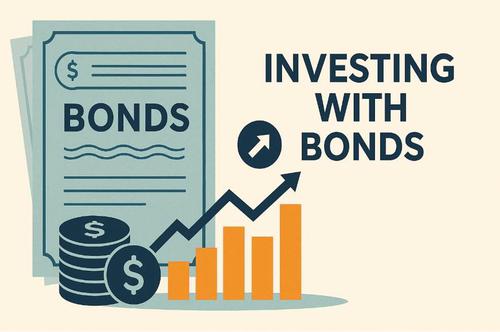MarketLens
Bond ETFs: Navigating New Opportunities in Fixed Income
The bond market presents a myriad of opportunities for investors seeking to diversify their portfolios and mitigate risk. Bond Exchange-Traded Funds (ETFs) offer a compelling investment vehicle due to their diversification, liquidity, and cost-efficiency. This report critically examines various bond ETFs, synthesizing information from multiple sources to identify the best investment opportunities in the current market landscape.
Overview of Bond ETFs
Bond ETFs are investment funds that trade on stock exchanges, similar to stocks, but they invest in a diversified portfolio of bonds. These ETFs provide investors with exposure to different segments of the bond market, including government, corporate, municipal, and high-yield bonds. The primary advantages of bond ETFs include diversification, lower expense ratios compared to mutual funds, and ease of trading.
Core Bond ETFs
Core bond ETFs are designed to provide broad exposure to the investment-grade bond market. They are typically favored by conservative investors seeking stable income and capital preservation.
- Vanguard Total Bond Market ETF (BND)
- AUM: $245 billion
- Expense Ratio: 0.03%
- SEC Yield: 3.1%
- Analysis: BND aims to track the performance of the US investment-grade bond market, making it a solid choice for conservative investors. Its low expense ratio and substantial AUM indicate high liquidity and cost-efficiency.
- iShares Core U.S. Aggregate Bond ETF (AGG)
- AUM: $75 billion
- Expense Ratio: 0.04%
- SEC Yield: 2.3%
- Analysis: AGG offers similar exposure to BND but with a slightly higher expense ratio and lower yield. It remains a strong contender for those seeking a diversified bond portfolio.
Intermediate-Term and Corporate Bond ETFs
Intermediate-term and corporate bond ETFs cater to investors willing to take on moderate risk for potentially higher returns.
- Vanguard Intermediate-Term Corporate Bond ETF (VCIT)
- AUM: $45 billion
- Expense Ratio: 0.07%
- SEC Yield: 3.1%
- Analysis: VCIT focuses on intermediate-term corporate bonds, offering a balance between risk and return. Its higher yield compared to core bond ETFs makes it attractive for income-focused investors.
- iShares iBoxx $ Investment Grade Corporate Bond ETF (LQD)
- AUM: $44 billion
- Expense Ratio: 0.14%
- SEC Yield: 3.1%
- Analysis: LQD provides exposure to investment-grade corporate bonds with a slightly higher expense ratio. Its yield is comparable to VCIT, making it another viable option for those seeking corporate bond exposure.
High-Yield and Specialized Bond ETFs
High-yield and specialized bond ETFs are suitable for investors with a higher risk tolerance, seeking greater returns.
- SPDR Bloomberg Barclays High Yield Bond ETF (JNK)
- AUM: $9 billion
- Expense Ratio: 0.40%
- SEC Yield: 5.2%
- Analysis: JNK invests in high-yield corporate bonds, also known as junk bonds. Its higher yield reflects the increased risk, making it suitable for aggressive investors.
- ProShares Investment Grade-Interest Rate Hedged ETF (IGHG)
- AUM: Not specified
- Expense Ratio: 0.30%
- Yield: 5.09%
- Analysis: IGHG hedges against interest rate risk while investing in investment-grade corporate bonds. This strategy can be beneficial in a rising interest rate environment, providing a balance between yield and risk management.
Municipal and International Bond ETFs
Municipal and international bond ETFs offer tax advantages and global diversification, respectively.
- iShares National Muni Bond ETF (MUB)
- AUM: Not specified
- Expense Ratio: 0.07%
- Yield: 2.82%
- Analysis: MUB invests in municipal bonds, providing tax-exempt income. It is particularly attractive for investors in high tax brackets.
- Vanguard Total International Bond ETF (TILT)
- AUM: Not specified
- Expense Ratio: 0.15%
- Three-Year Annualized Return: 3.98%
- Analysis: TILT offers exposure to non-U.S. investment-grade bonds, providing global diversification. Its moderate expense ratio and solid returns make it a viable option for international exposure.
Short-Term and Inflation-Protected Bond ETFs
Short-term and inflation-protected bond ETFs are designed to mitigate interest rate risk and protect against inflation.
- iShares 0-5 Year TIPS Bond ETF (STIP)
- AUM: Not specified
- Expense Ratio: 0.03%
- Yield: 2.80%
- Analysis: STIP invests in U.S. Treasury Inflation-Protected Securities (TIPS) with maturities between 0 and 5 years. It is ideal for investors seeking inflation protection with minimal interest rate risk.
- Fidelity Total Bond ETF (FBND)
- AUM: Not specified
- Expense Ratio: 0.02%
- Return: 7.54% over the past year
- Analysis: FBND provides broad exposure to the US investment-grade bond market with an exceptionally low expense ratio. Its strong performance over the past year highlights its potential as a core bond holding.
Evaluating Bond ETFs: Key Considerations
When evaluating bond ETFs, investors should consider several factors:
- Expense Ratio: Lower expense ratios are generally preferred as they enhance net returns.
- AUM and Liquidity: Higher AUM indicates better liquidity, making it easier to buy and sell shares.
- Yield and Performance: Higher yields can be attractive but often come with increased risk. Past performance can provide insights into how the ETF might perform under different market conditions.
- Credit Rating and Duration: Higher credit ratings indicate lower default risk, while shorter durations reduce interest rate sensitivity.
- Investment Strategy: Understanding whether the ETF is passively managed, actively managed, or employs a smart beta strategy is crucial for aligning with investment goals.
Recent Market Developments and Implications
As of mid-2024, the bond market is influenced by several key factors:
- Interest Rates: With the Federal Reserve maintaining higher interest rates, short-term bonds and interest rate-hedged ETFs are particularly attractive.
- Inflation: Inflation concerns make TIPS and inflation-protected bond ETFs appealing for preserving purchasing power.
- Economic Uncertainty: In an uncertain economic environment, high-quality bonds and diversified bond ETFs provide a safe haven for investors.
Conclusion
In conclusion, bond ETFs offer a versatile and efficient way to gain exposure to the bond market. Core bond ETFs like BND and AGG are suitable for conservative investors, while intermediate-term and corporate bond ETFs like VCIT and LQD offer higher yields for moderate risk-takers. High-yield and specialized bond ETFs such as JNK and IGHG cater to aggressive investors seeking greater returns. Municipal and international bond ETFs provide tax advantages and global diversification, respectively. Finally, short-term and inflation-protected bond ETFs like STIP and FBND are ideal for mitigating interest rate risk and protecting against inflation.
Investors should carefully evaluate their financial goals, risk tolerance, and investment horizon before selecting bond ETFs. Consulting with a financial advisor and conducting thorough research is recommended to make informed investment decisions. As the bond market evolves, staying informed about market trends and developments will be crucial for optimizing investment strategies.
Related Articles
Category
You may also like
No related articles available
Breaking News
View All →No topics available at the moment






